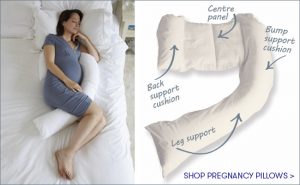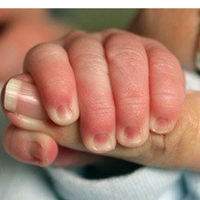Baby led weaning is currently enjoying a surge in popularity as busy parents look for simple ways to feed their babies healthy diets. Unlike spoon feeding, baby led weaning leaves the babies in control. Finger foods are offered immediately and the baby is able to control what and how much he eats. It saves parents time because there is no pureeing involved and babies can simply enjoy the same foods as their parents (assuming no salt is used during the cooking process). Baby led weaning offers convenience without the sugars and salt often found in jars of store bought baby food which is another reason this weaning method is becoming so popular. Baby led weaning (BLW to the cool kids) is sometimes described as a parenting fad. Lumped in with babywearing and breastfeeding, BLW has a bit of a rep as a modern crunchy parenting craze. You know, as if blenders and pushchairs have been around since the dawn of time and not using such things is brand new.
There are plenty of parenting myths floating around and one such myth is that baby led weaning increases the risk of choking. Other parenting myths include the belief that cuddling your baby too much will spoil him and that smacking never does any harm. Luckily, we live in a world with scientific study so it’s pretty easy to disprove the parenting myths that refuse to die. A recent study published in the September 2016 issue of the journal Pediatrics concluded that baby led weaning does not increase the risk of choking. Over 200 infants participated in the study which compared BLW with the more traditional approach to weaning. The researchers found no significant difference in the rate of choking between feeding methods.Parents were asked to fill out questionnaires detailing incidents of choking and types of food offered. They did, however, feel that an alarmingly high number of babies experienced choking incidents overall and that it was important all parents were informed of how to decrease the risk of choking.
It is important to note that gagging and choking are very different. The gag reflex is the body’s way of preventing choking and whilst it may look scary, it is actually a very normal part of your baby learning to feed himself. On the other hand, choking is unnatural and can be life threatening. Choking restricts the airway and you will need to act fast to help clear the blockage. There are steps you can take to reduce the risk of choking, these include: Ensuring food is soft – steamed carrots are a much safer option than raw carrot for young babies. Avoiding foods that form a crumb in the mouth. Ensuring foods are big enough for baby to hold – you should cut finger foods into long strips that allow baby to get a good grip on them. Staying with your baby during mealtimes – never leave a baby unattended whilst he is eating. If anything should happen, it’s important you are there to act fast. A choking baby cannot cry out for help. Sitting baby up properly – your baby should be sat up properly to decrease the risk of choking. High chairs are upright for this very reason. Giving baby full control – one of the benefits of BLW is that baby gets to choose how much he eats and this greatly reduces the risk of overeating. By giving your baby full control of his eating habits, you reduce the risk of choking too. A third of the study participants experienced choking regardless of the weaning method chosen. For this reason, it’s important that parents know what to do when their baby is choking. If you feel nervous about what you’d do in that situation, it might be worth taking a pediatrics first aid course to prepare you with the necessary skills. Search online for affordable first aid courses near you. In the meantime, watch this video to learn the first aid skills you’ll need if your baby is choking.



